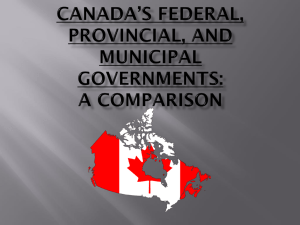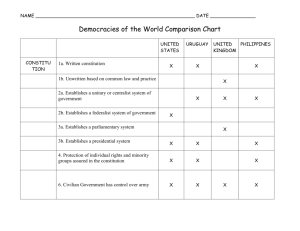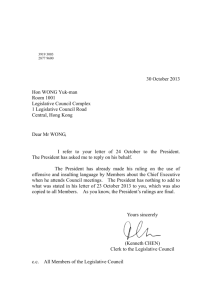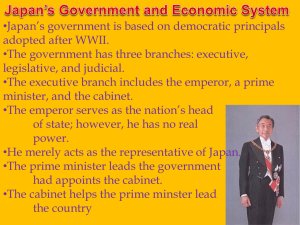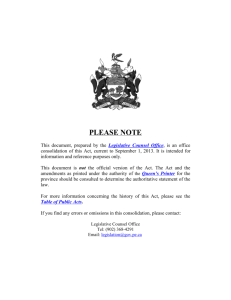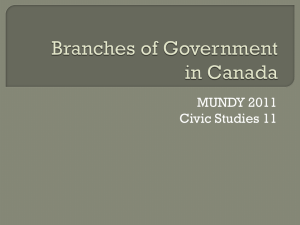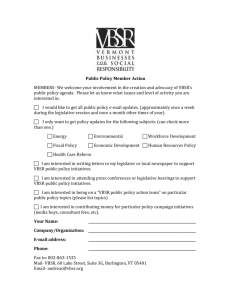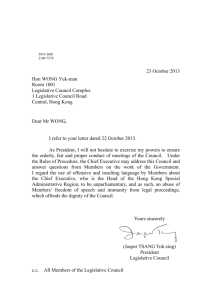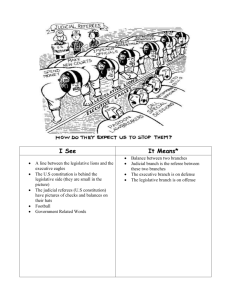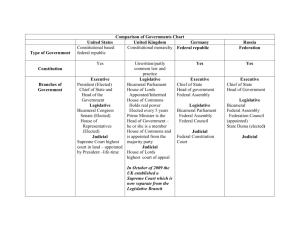3.5 Government and Law Making
advertisement
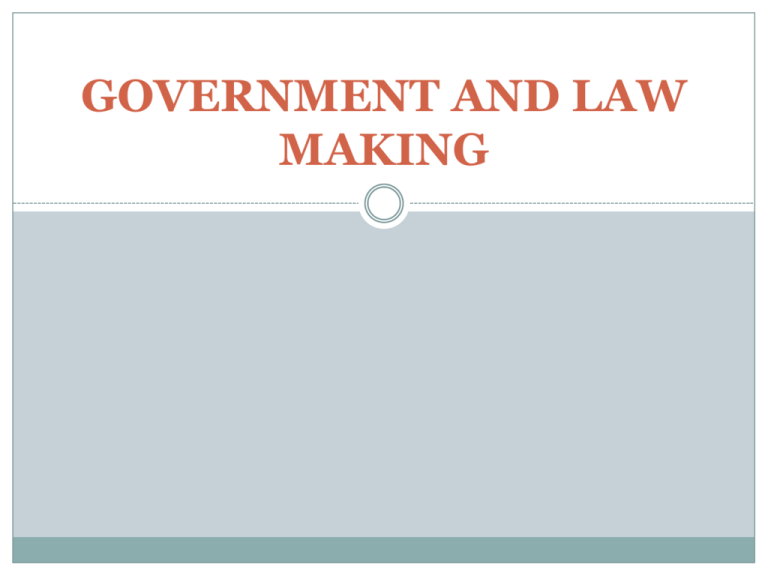
GOVERNMENT AND LAW MAKING Federal and Provincial governments are made up of three distinct branches: 1. 2. 3. The Executive branch The Legislative branch The Judiciary. The Executive Branch The administrative branch of government responsible for carrying out the government plans and policies. At the federal level: The Prime Minister Cabinet - elected representatives appointed by the PM to positions of responsibility. Ex. Peter McKay representative for Central Nova , and Minister of Justice and Attorney General of Canada. At the provincial level, Premier of the Province the elected Members of the Legislative Assembly (MLAs) are appointed to Cabinet positions for the province. Karen Casey, Minister of Education and representative to her area. Public or civil servants. The Executive Branch The Legislative Branch Power to change laws and pass new Statutes or laws. The Legislative Branch Federal Level - Called Parliament - consists of: House of Commons Senate - appointed by Governor General (Michaëlle Jean) and remain until age 75. Provincial Level- called Legislative Assembly. Lieutenant Governors of the provinces are appointed by the Governor General and paid by the Federal Government. (Mayann E. Francis) The Judiciary Part of the government but independent of the other two. Made up of Judges, justices, who adjudicate disputes, interpret the law, and decide on punishment. Their appointment is based on merit and not political motivation. Justices of the higher courts (Court of Appeal and Superior Court) are appointed by federal officials. Trial court judges for lower courts are provincial appointments. Enacting a Statue
